Continuing our Flower Power Series….SNOWBERRY
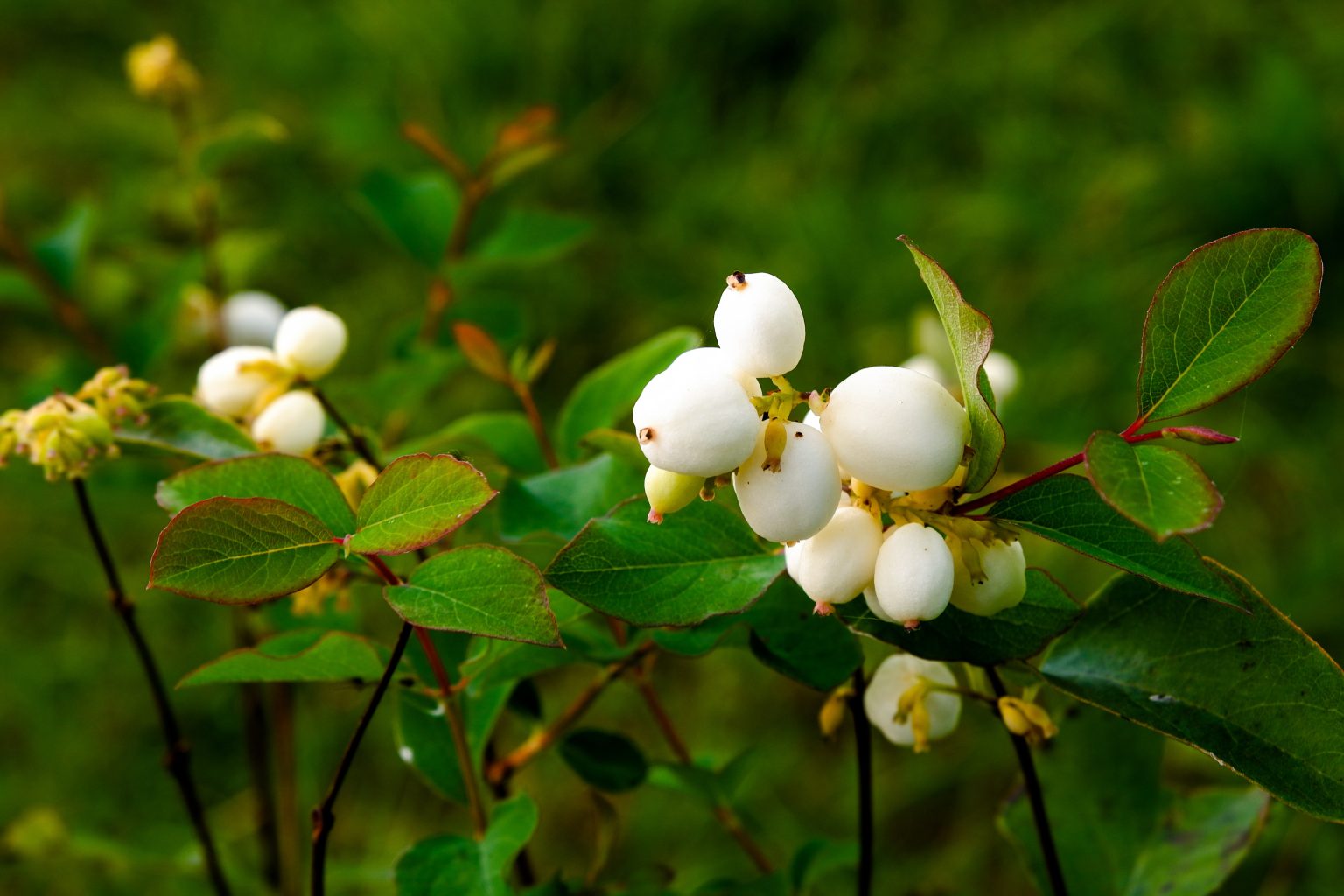
An intriguing deciduous shrub, Snowberry is a member of the honeysuckle family, Caprifoliaceae. Of the 15 or so species of snowberry, all but one originates in North America (that one species originates in western China).
Two varieties of Common Snowberry are native across northern U.S. and the Canadian provinces, as well as southeast Alaska to southern California. These shrubs have subsequently spread much further because they are beautiful, inexpensive and successful plants, easy to start from cuttings and transplant.
Snowberry shrubs can range from 3-9 feet tall and eventually grow into a thicket via their root system. These thickets can be very useful to combat erosion in various places, including along shorelines, because their ability to adapt to many growing conditions includes tolerating salt water.
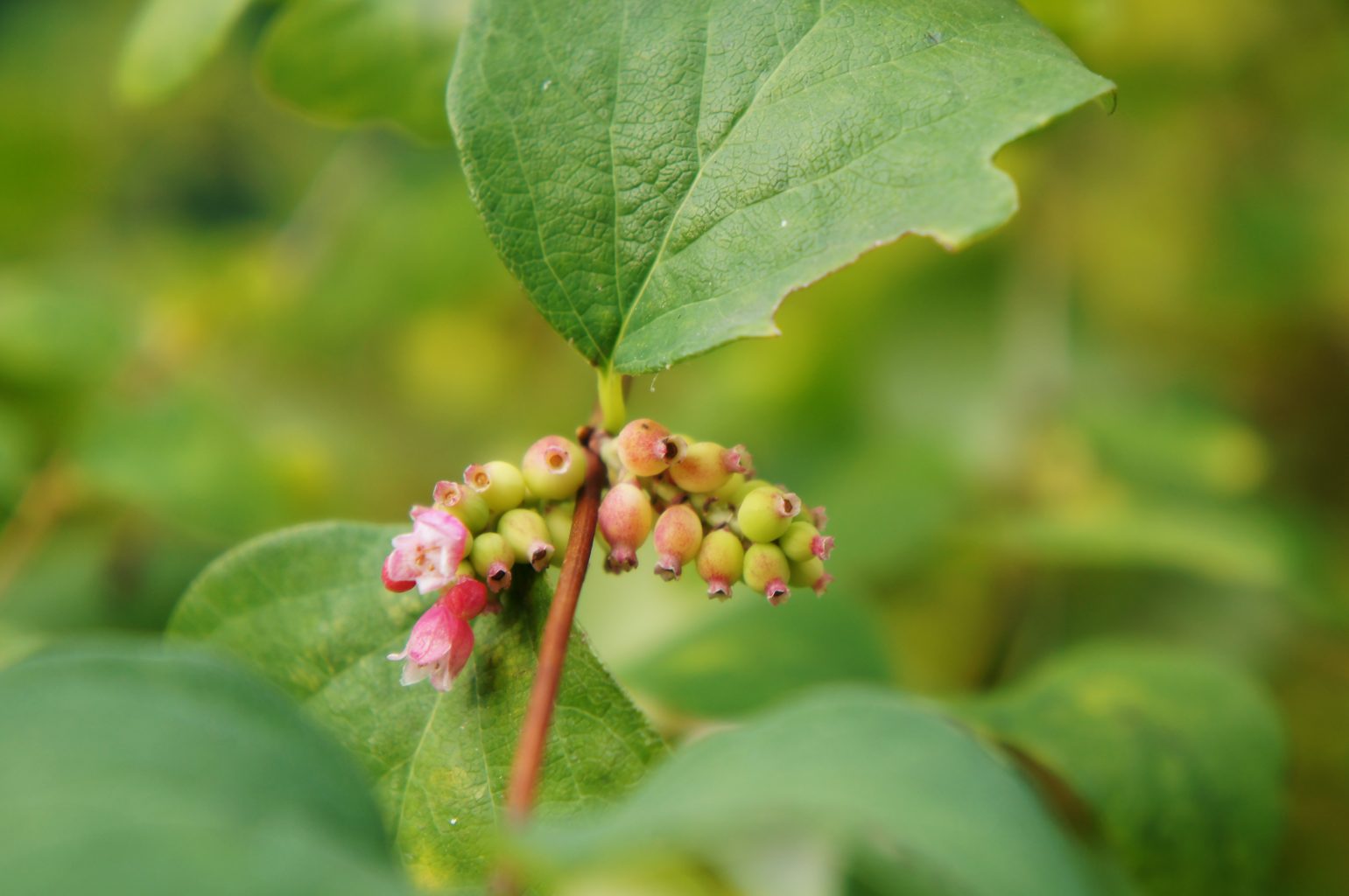
Snowberry has an “opposite branching pattern” which means that buds develop in pairs on either side of the stem. But, like snowflakes, each is unique; not one leaf looks the same as another. These sweet, dainty leaves add a sense to whimsy to this shrub. The leaves are also very attractive sites for moths and butterflies to lay their eggs. There is a moth called the “Snowberry Clearwing Moth”, a fascinating insect whose body resembles a bumble bee.
The little pink-white bell-shaped flowers first emerge anywhere from May to August, depending on the Snowberry species. Even if human eyes tend to be drawn to a more dramatic floral display, hummingbirds, bees and other pollinators find their nectar irresistible. In fact, snowberry is listed as a desirable shrub to plant for those who wish to attract or assist pollinator species.
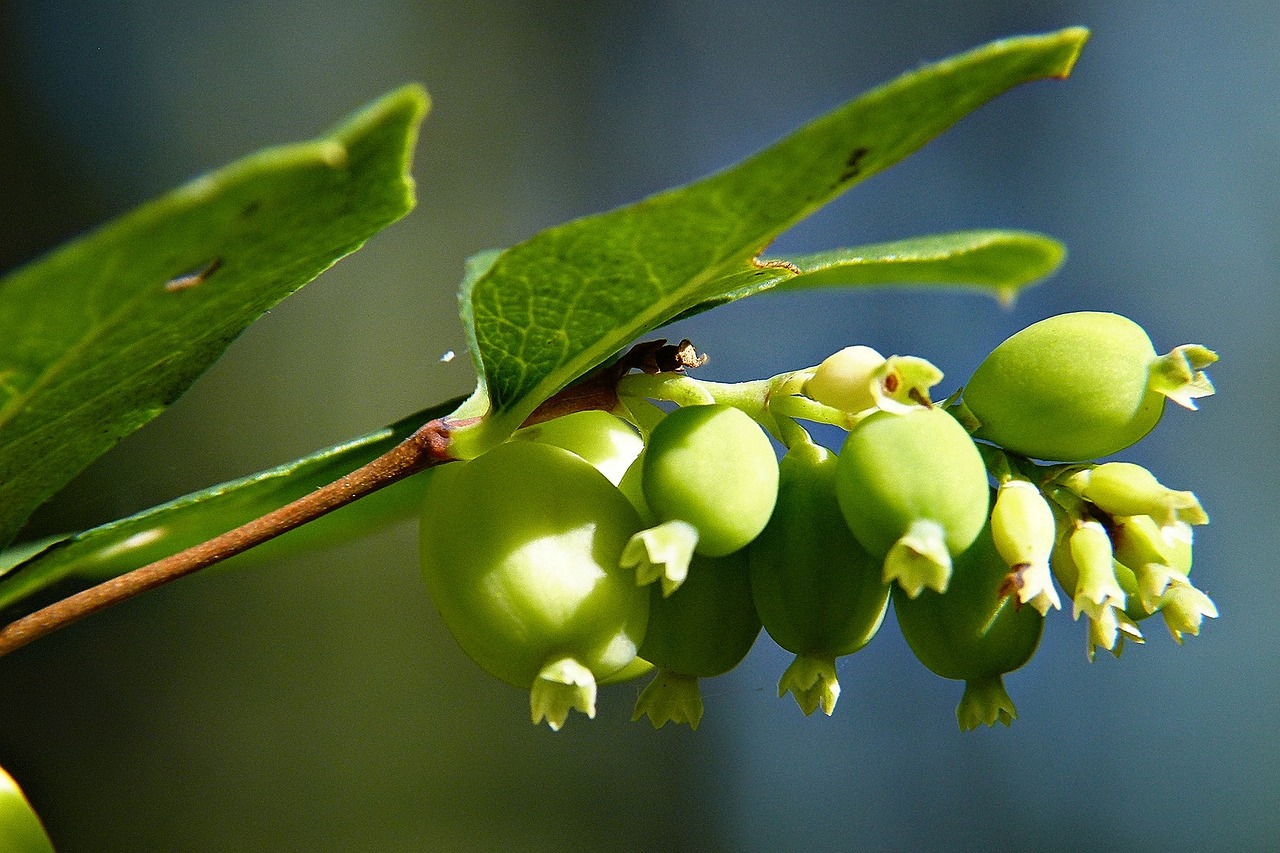
A little hiccup in the story: despite the name “snowberry”, this shrub doesn’t produce berries. It actually produces a white fruit called a drupe; a fruit with a seed surrounded by a hard woody layer. The woody surrounding is called a nutlet and each drupe has two, with one seed per nutlet.
Snowberry fruit contains a substance called saponin which is poorly absorbed by humans; a small amount may be tolerated but more than that, it becomes taxic. Fish do not tolerate snowberry fruit either but they are an important “browse” for deer, bear, antelope, Bighorn sheep and sometimes elk and moose.
Some of the birds who feed on snowberries (mostly when other sources of food are scarce) are grosbeaks, waxwings, robins, thrushes, towhees, grouse, pheasants, and quails. Snowberry is an important nesting habitat for Gadwall ducks in some areas.
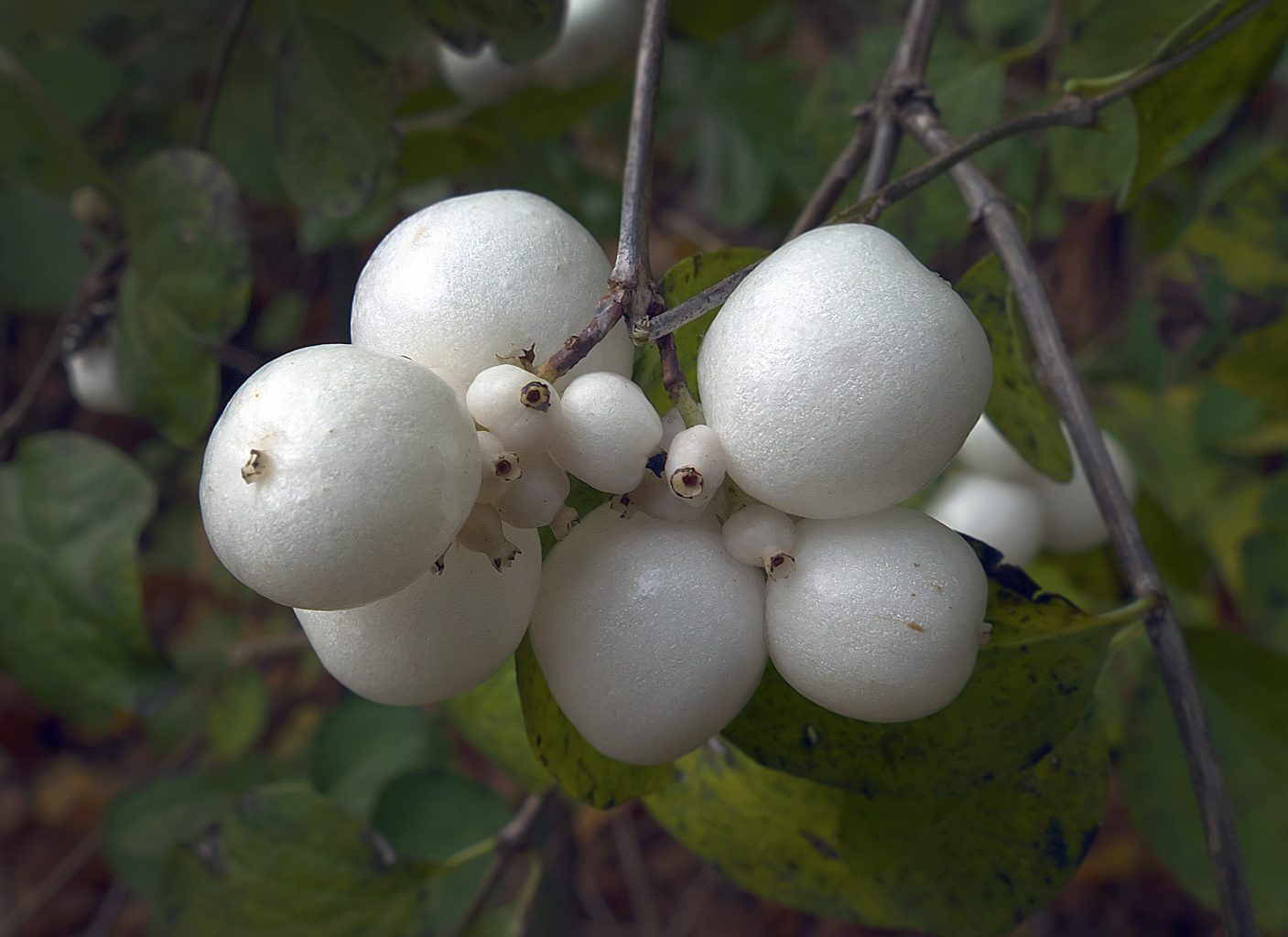
With so many species originating in North America, it is no wonder Snowberry was an important resource for the people. The Paiute and Nez Perce tribes utilized the wood to construct baby cradles, its branches for arrow shafts and brooms and the twigs were hollowed out for use as pipe stems.
The fruit of the Snowberry was historically useful to many Indigineous peoples as a natural shampoo because of its soapy, foaming properties and antioxidant/antimicrobial effects on the skin. Fresh snowberries were applied to soothe cuts, rashes or sores. The fruit was occasionally consumed, very sparingly, to accelerate the digestion of meals with high fat content while the roots, once they were soaked, made into a tea to treat stomach disorders.
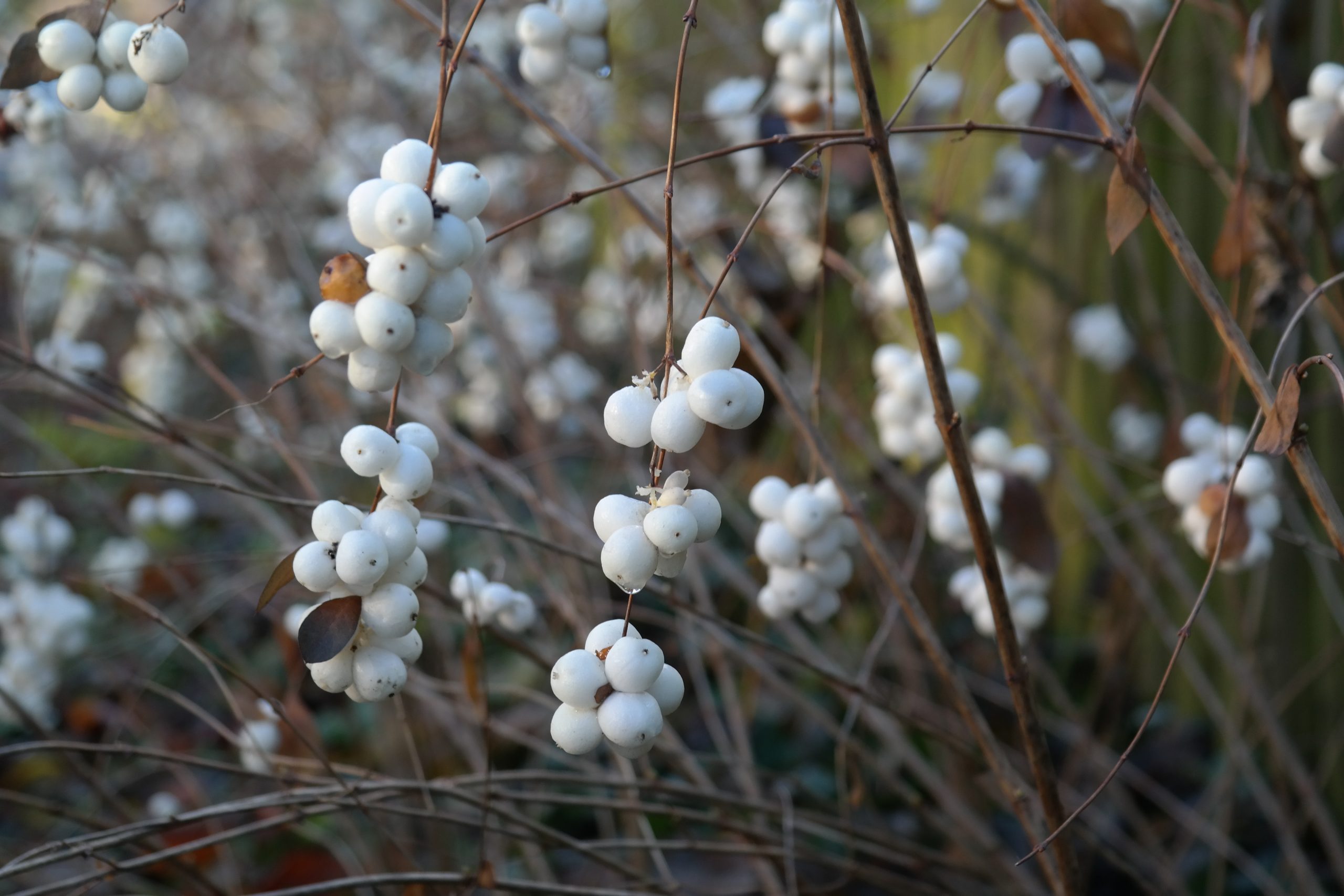
A perennial plant, Snowberry can survive more than 40 years in the wild. The clusters of pure white berries appear in the latter part of the summer and autumn, lasting well into the winter months. Winter can be a difficult time for animals, especially when it snows, so these trees/shrubs then become essential to their survival.
For humans, the fat white fruit show up beautifully on their wiry, leafless stems within the starkness of a winter landscape. Hearty and relatively easy to care for, Snowberry is a great addition to many types of gardens, providing visual interest during the winter months. For indoor enjoyment, Snowberry twigs and fruit make stunning Christmas wreaths, centerpieces and other arrangements.
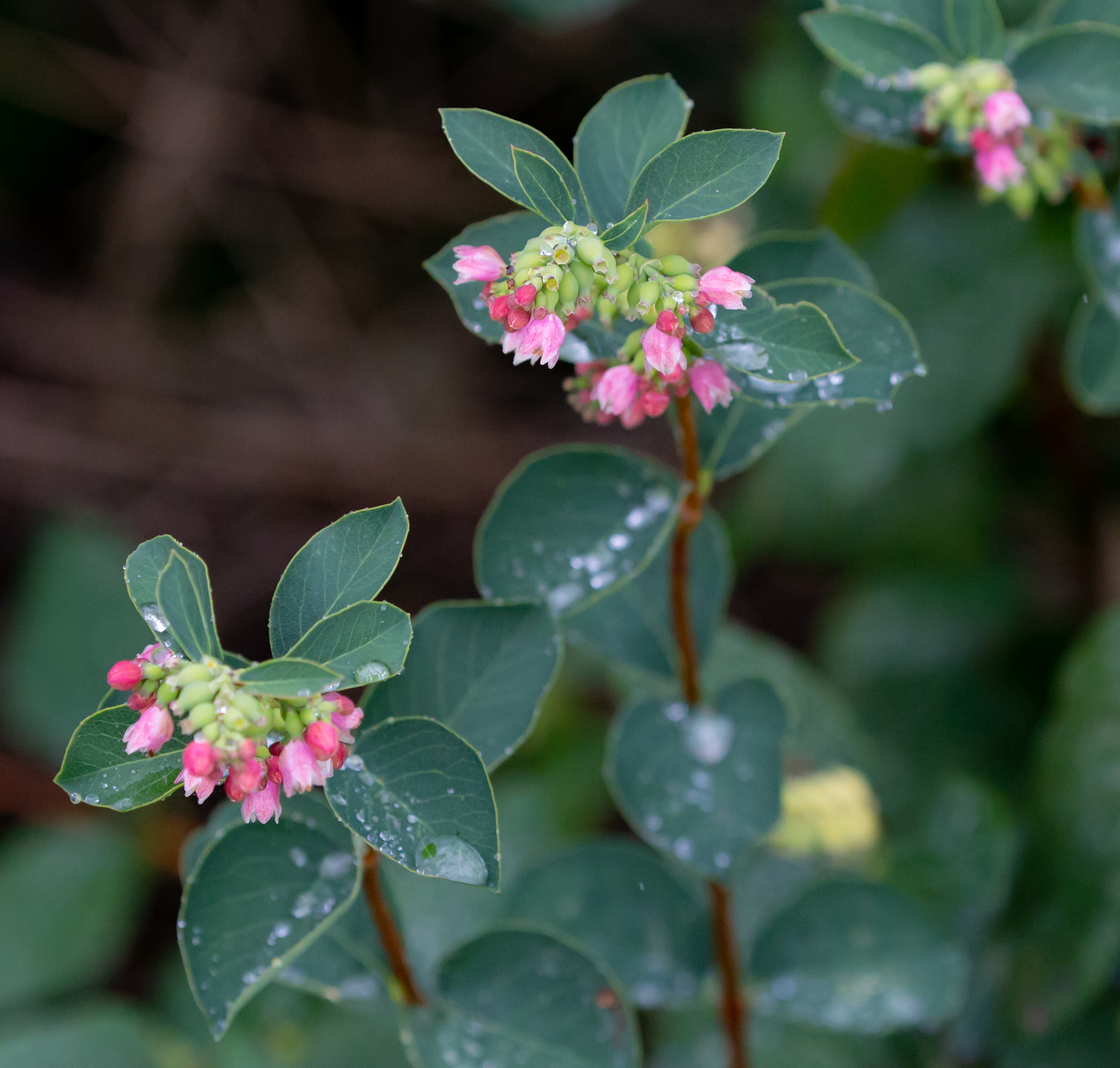
Snowberry is also known as Waxberry, but its botanical name is Symphoricarpos albus. The first portion Symphori- translates to “bear together” and carpos means “fruit”. Albus means “white”, which obviously refers to the color of the fruit.
The Latin name symphoricarpos originates from the Greek term symploke which means interconnectedness, interlacing and interweaving. This provides a wonderful starting point for those who wish to step into the ancient practice of taking time to honor the interconnectedness of the universe and our ancestors.
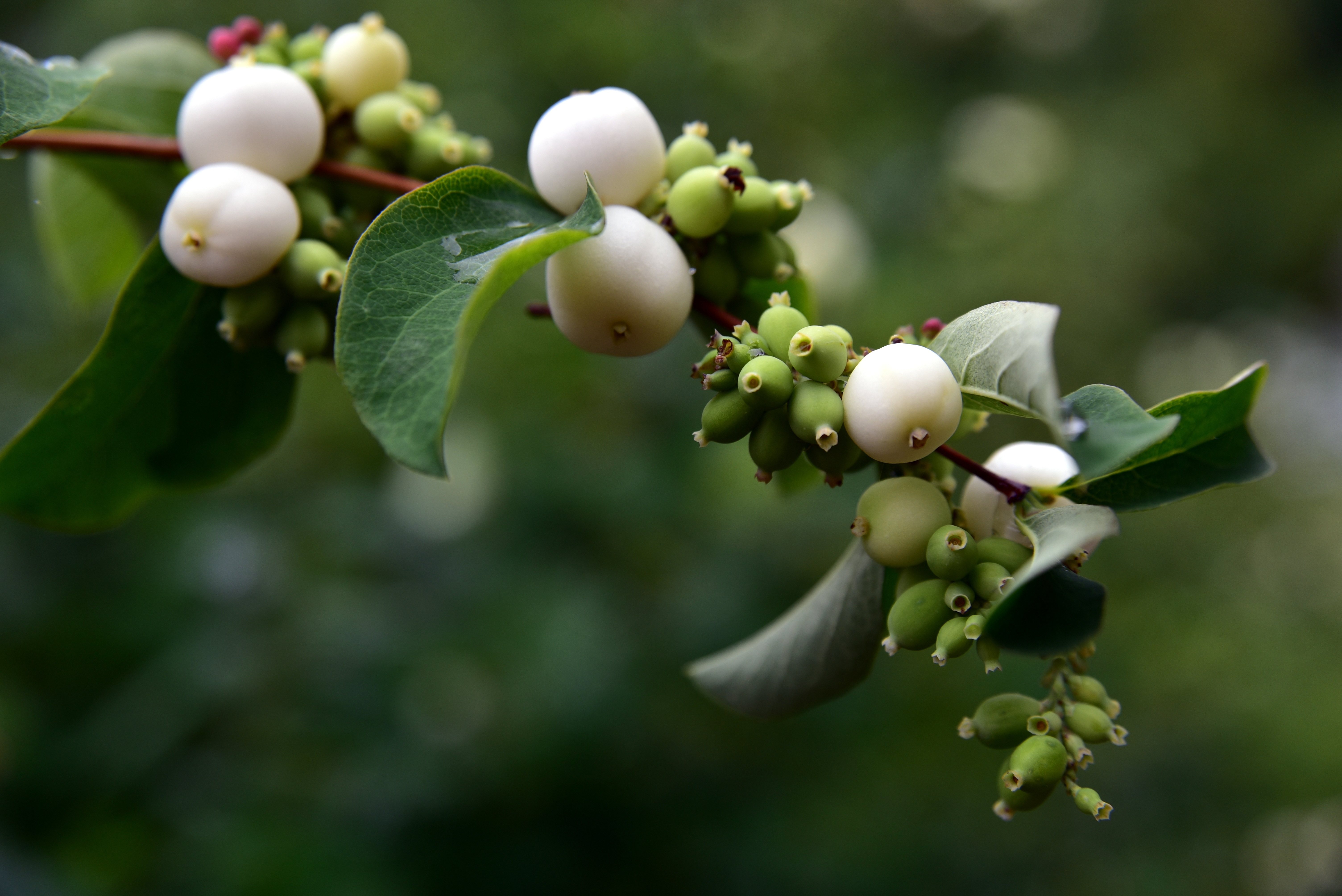
Developed in the early 1900’s by Dr. Edward Bach, Bach Flower Essences (and other brands) are diluted cold water infusions of fresh flower harvests. These essences do not work on the same bio-chemical lines as something like an aspirin does on a headache. They work by helping the body to release underlying emotional stress, thus clearing the way for the body to come back into balance. Flower Essences are taken orally by drops or externally in a spray, cream base or in a bath.
Of the Flower Essences for Snowberry, one company writes: “Snowberry is a plant for resistance. It gives us the strength to resist and persist. It gives us strength to get through darkness and through winter. Use snowberry flower essence to overcome emotional trauma and be ready to accept things and yourself as they are here and now, moment to moment.”
Whether you are utilizing Snowberry Flower Essence, experiencing “darkness, winter” as a feeling or just looking to make a new friend in nature, there is much this plucky, whimsical and extraordinary plant has to offer.
